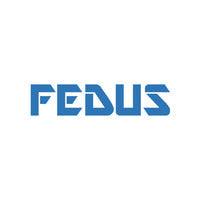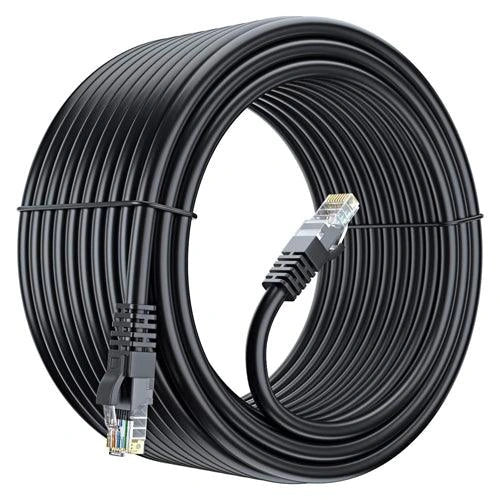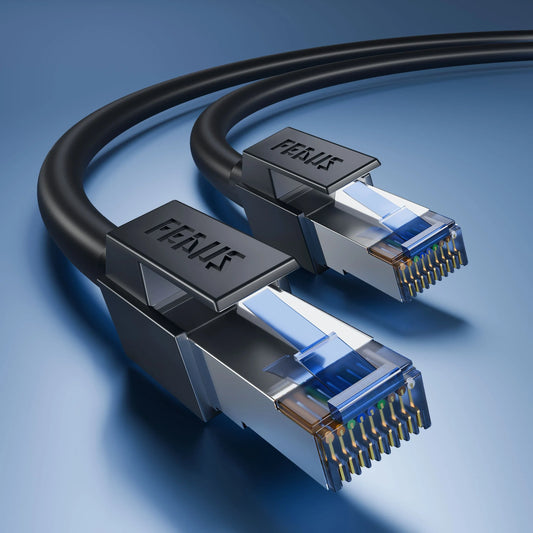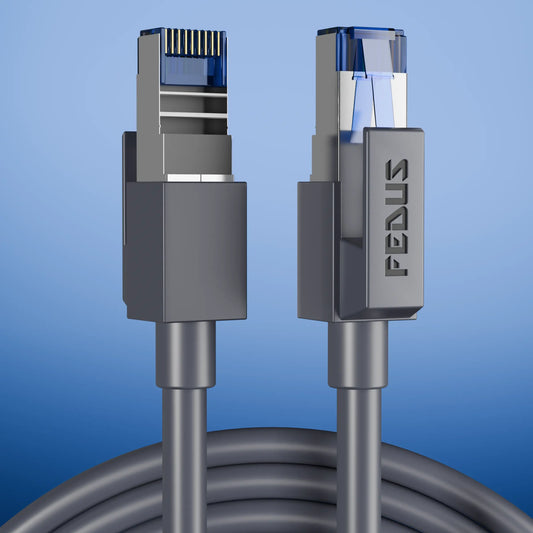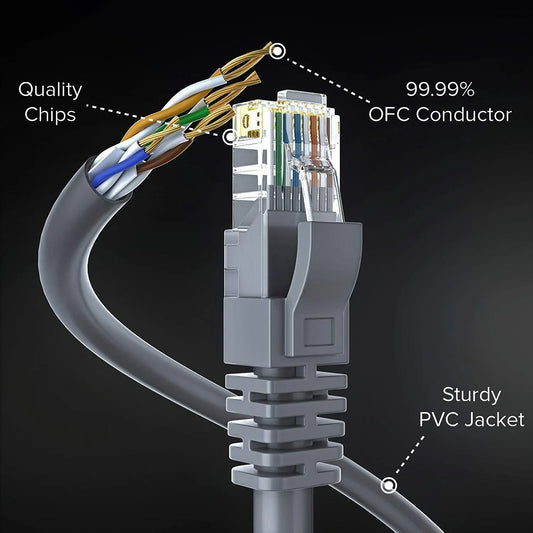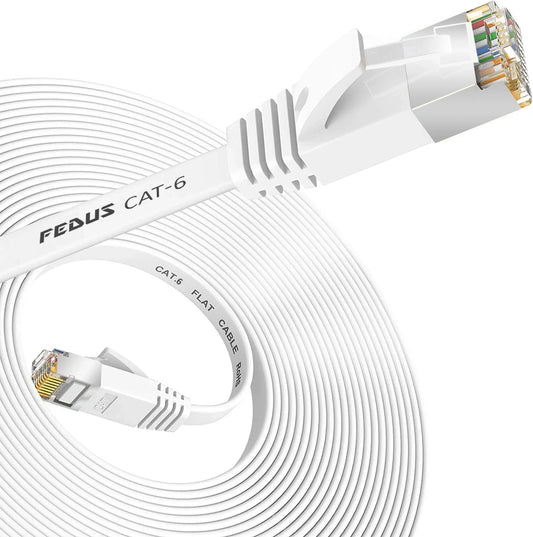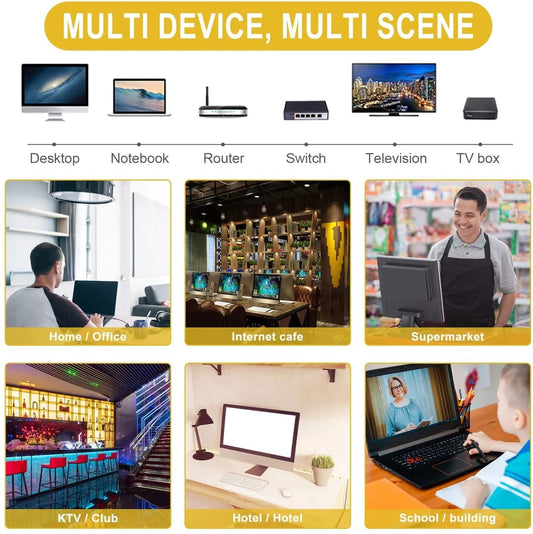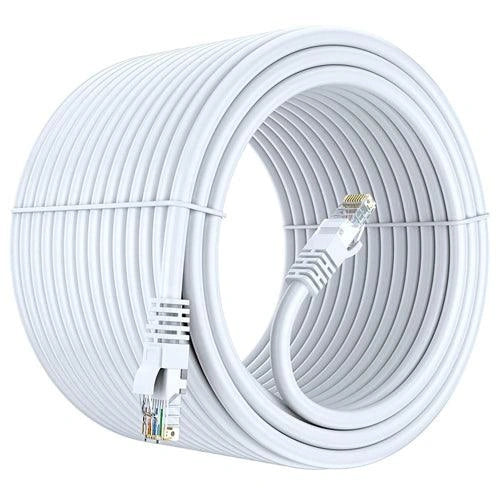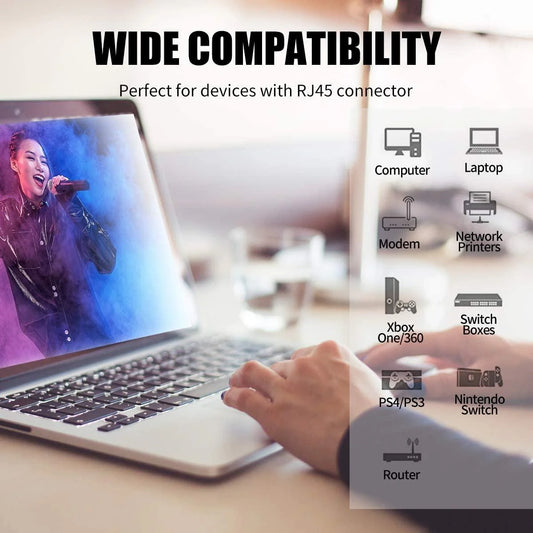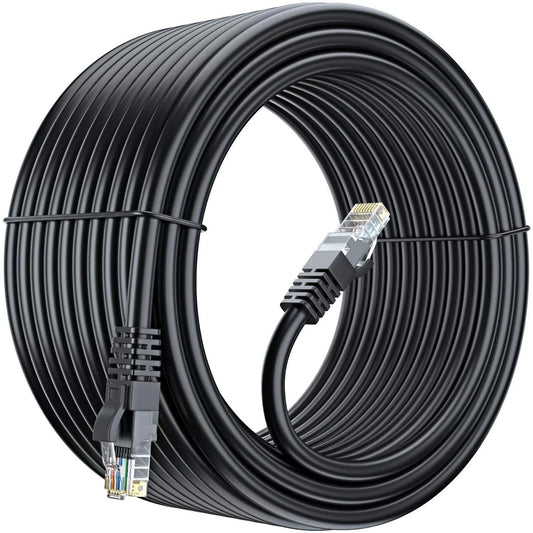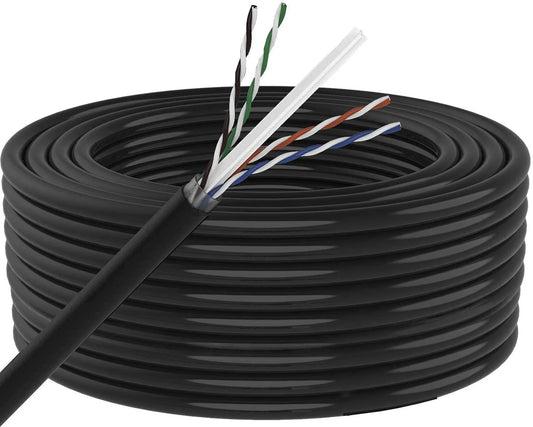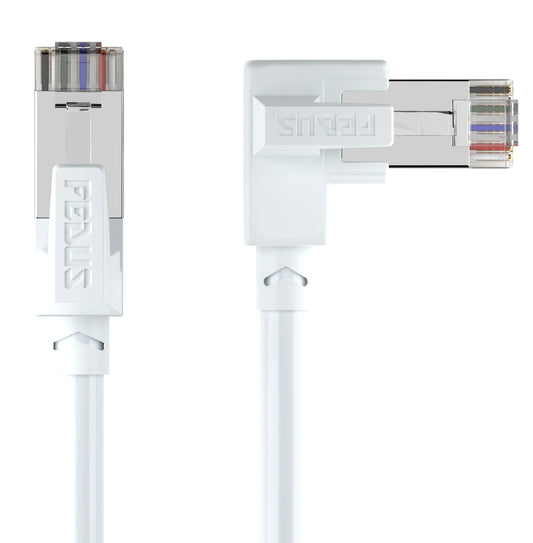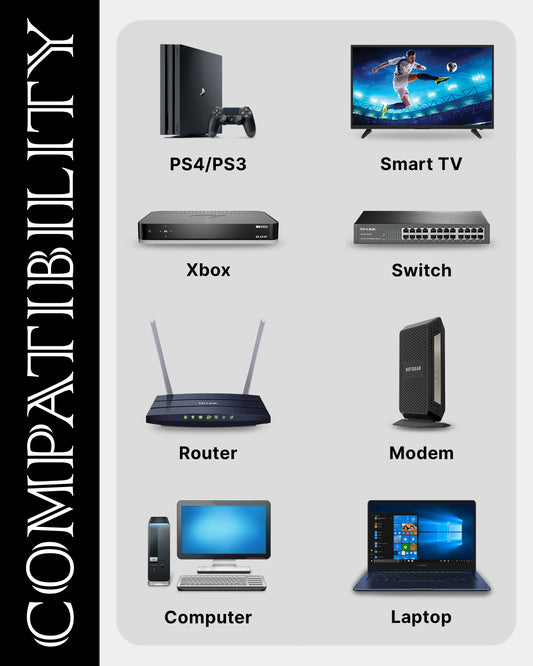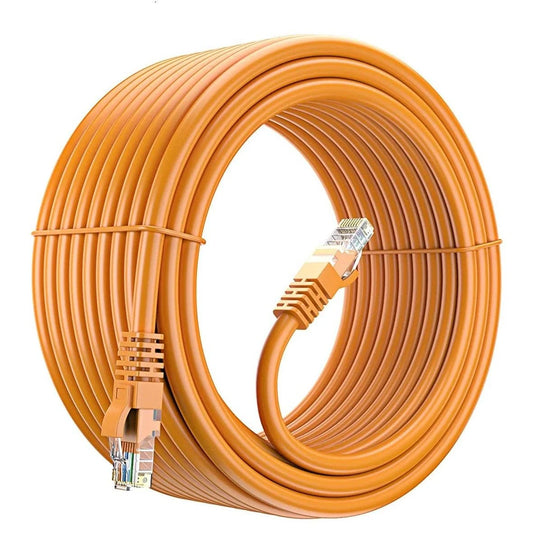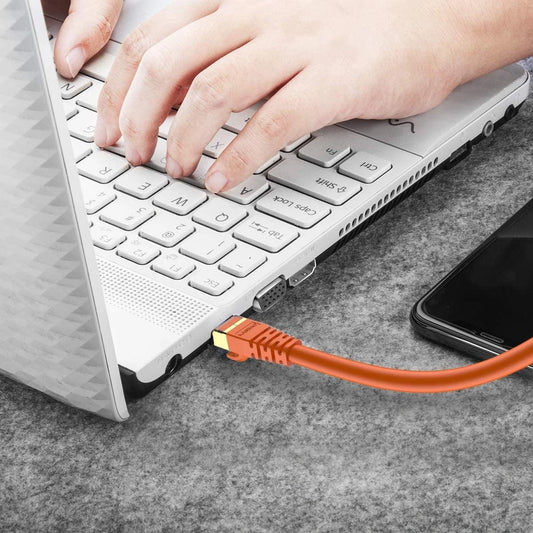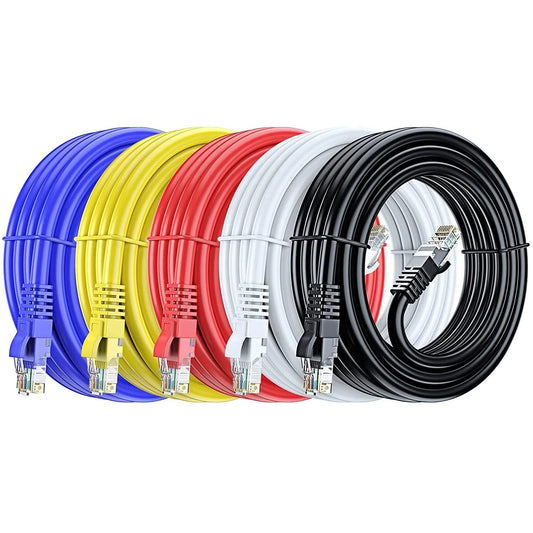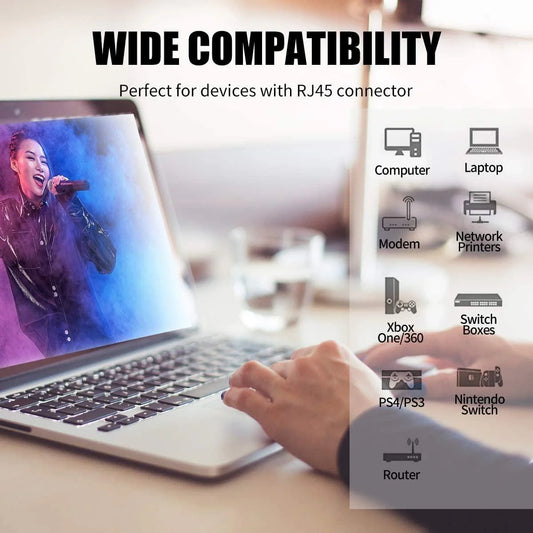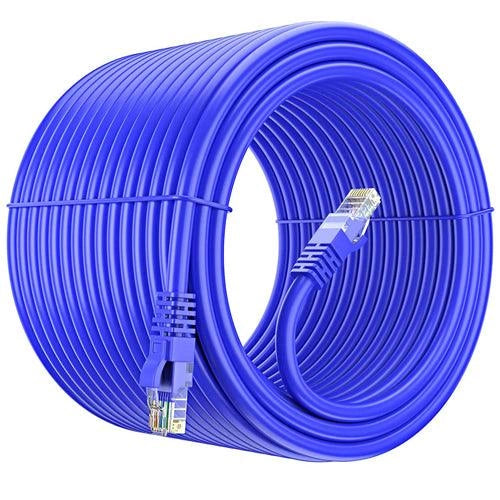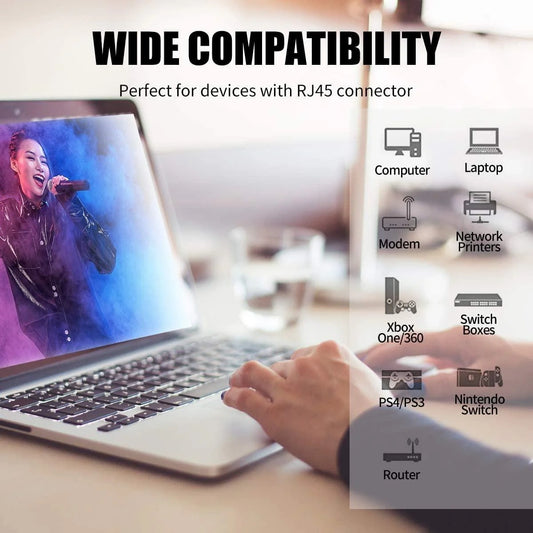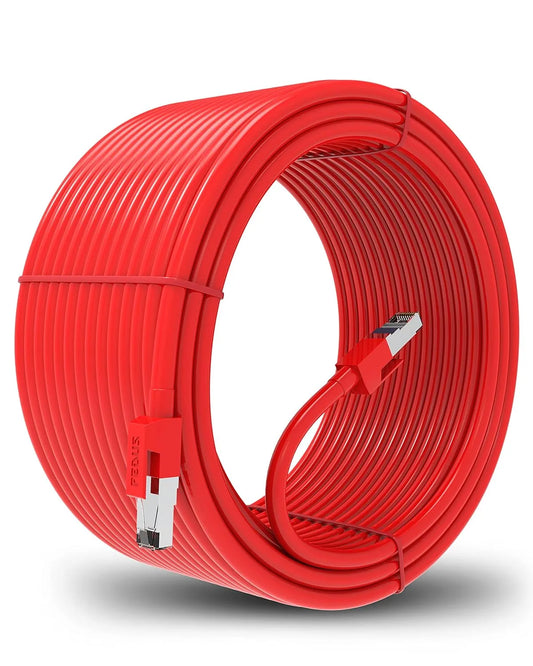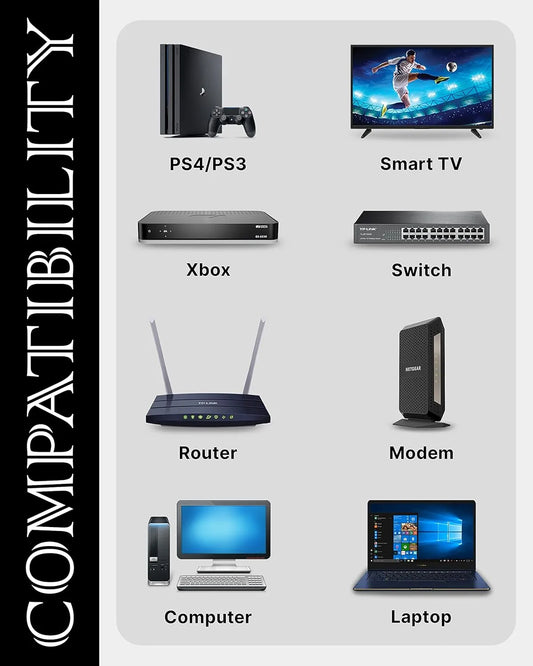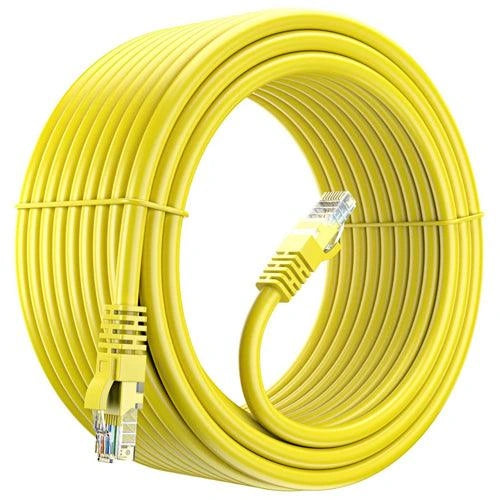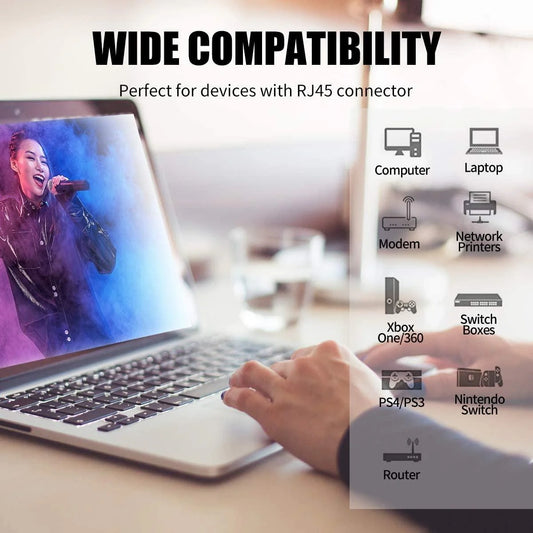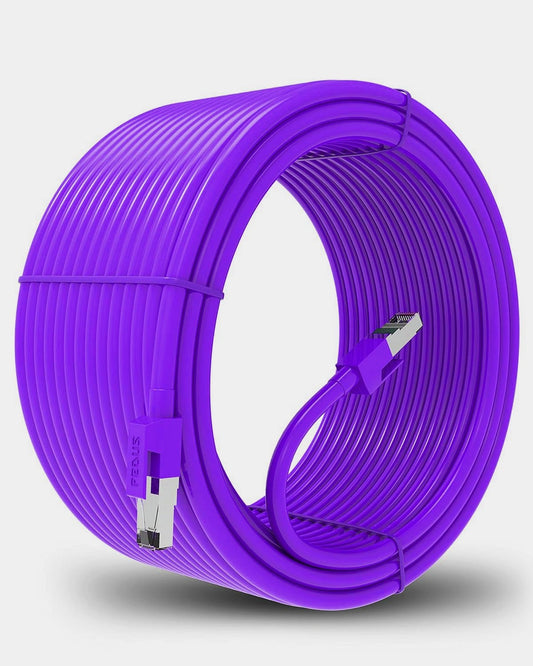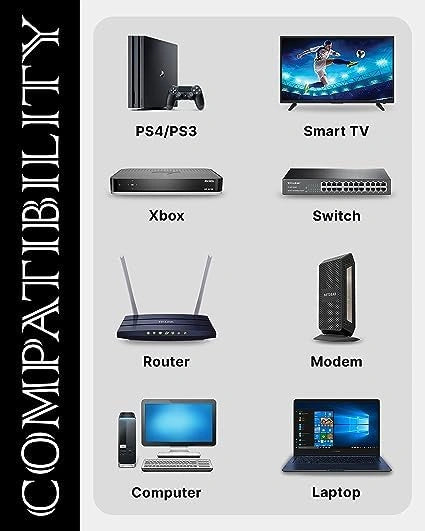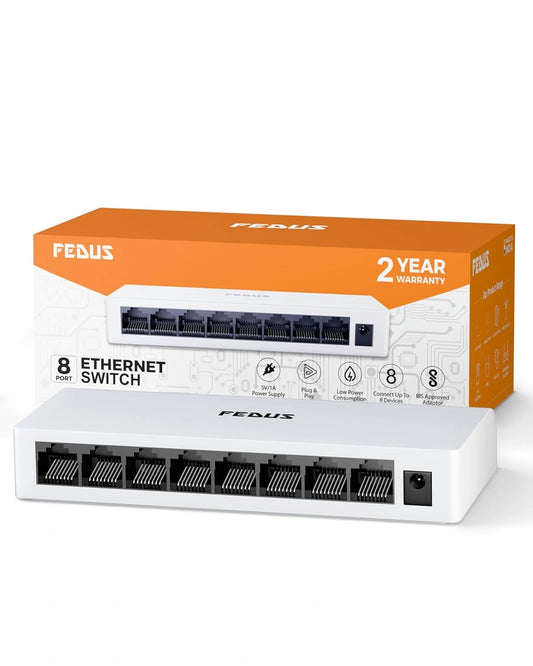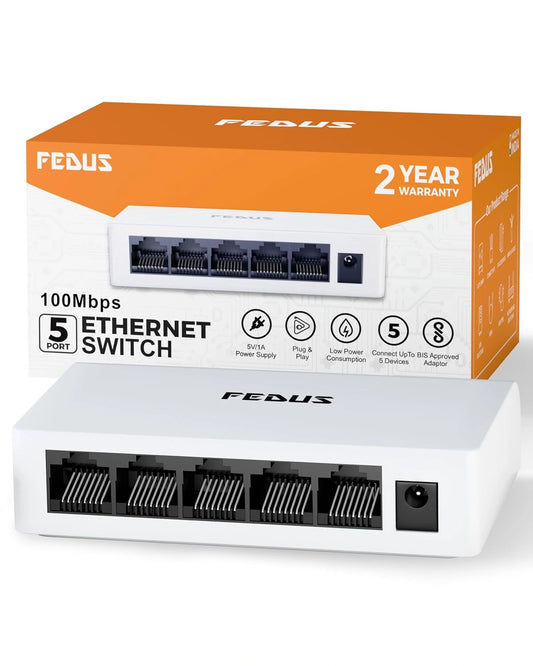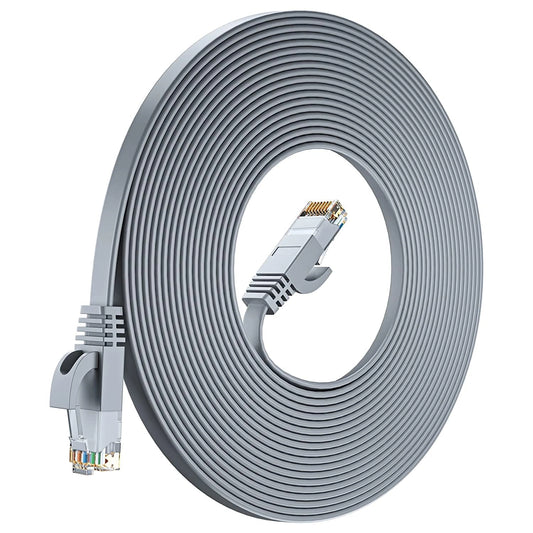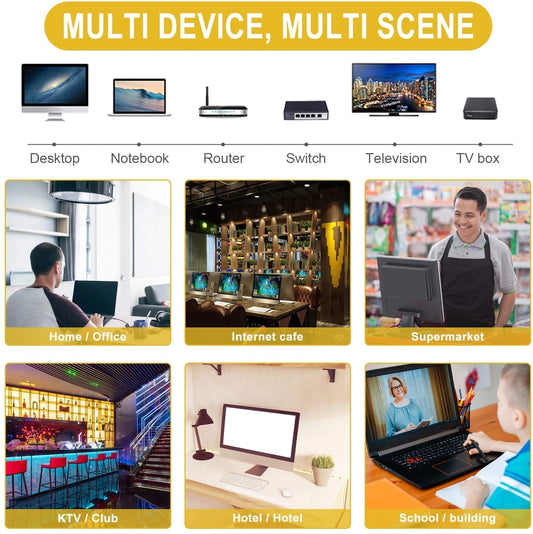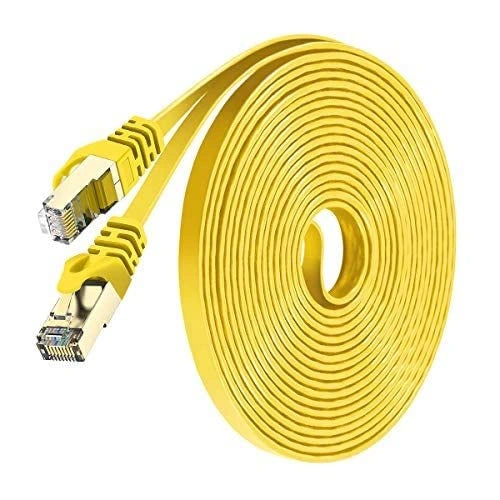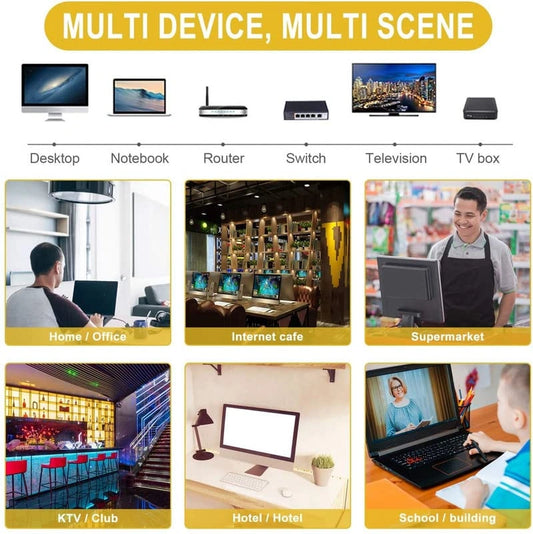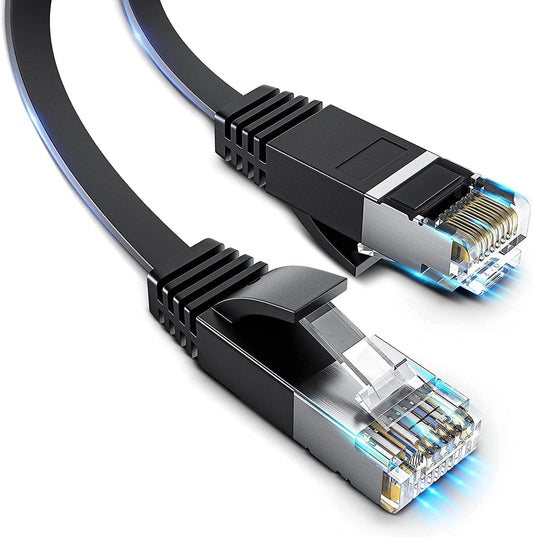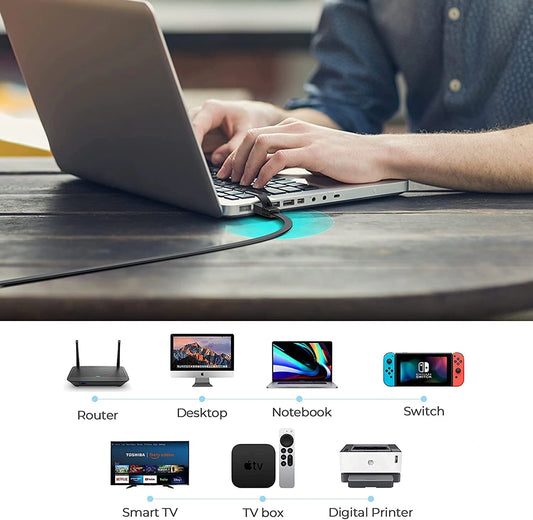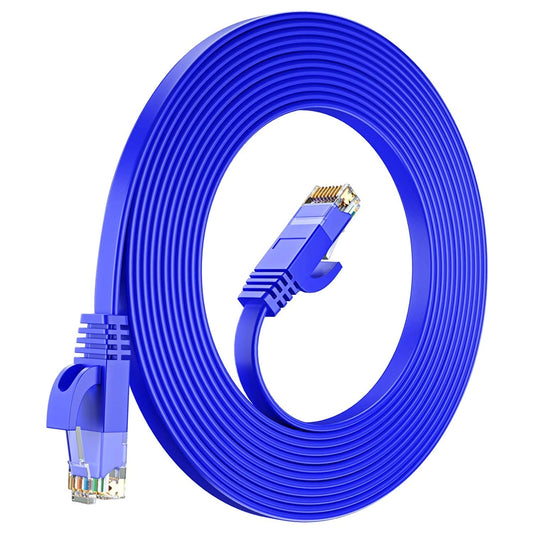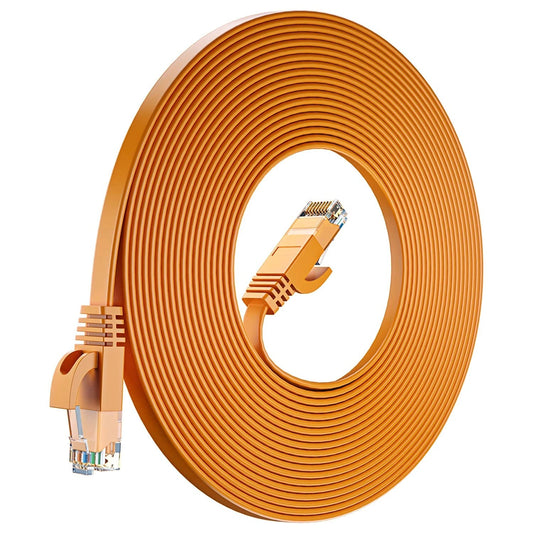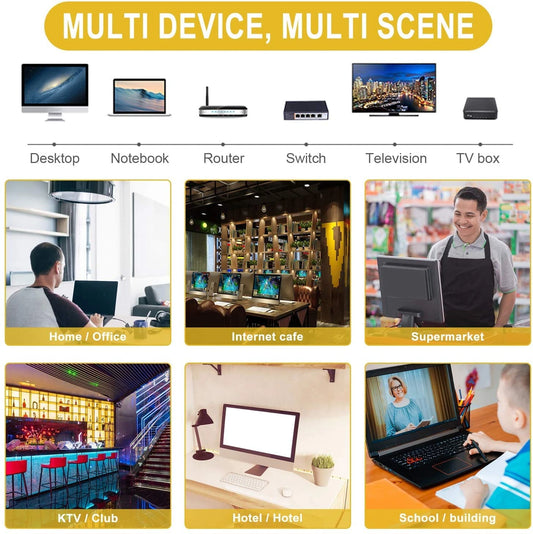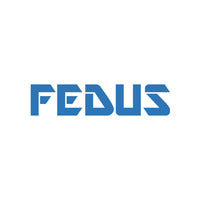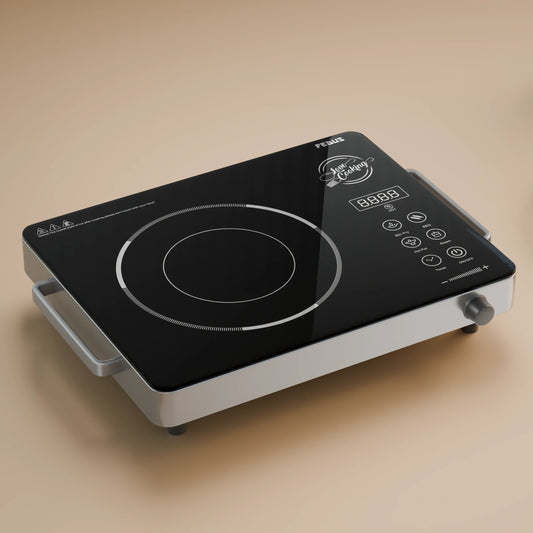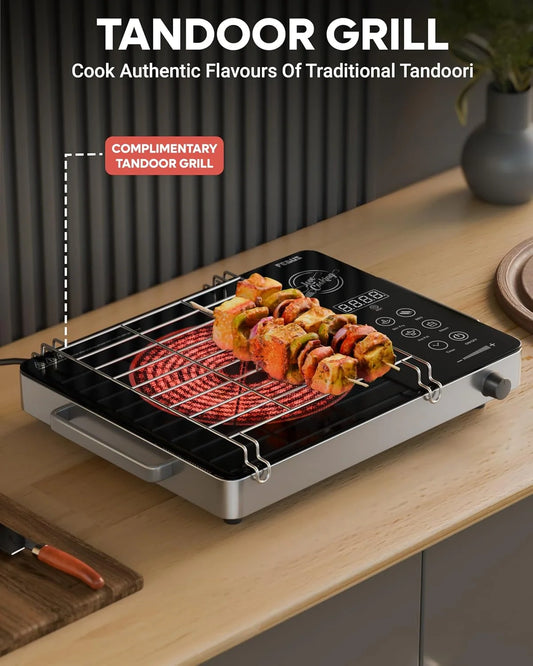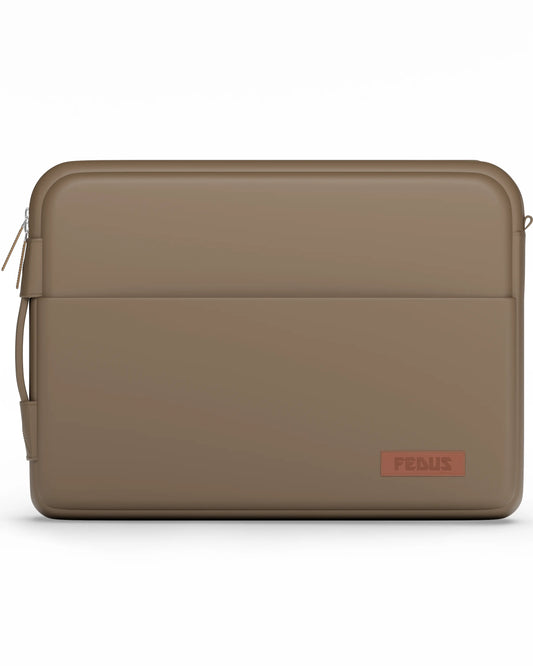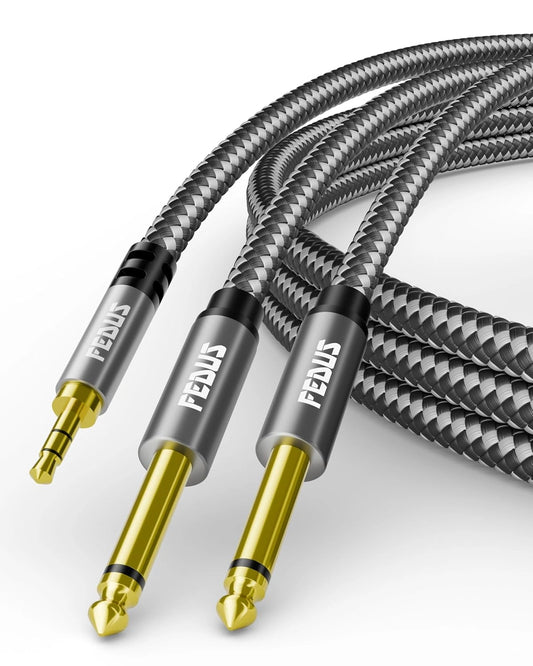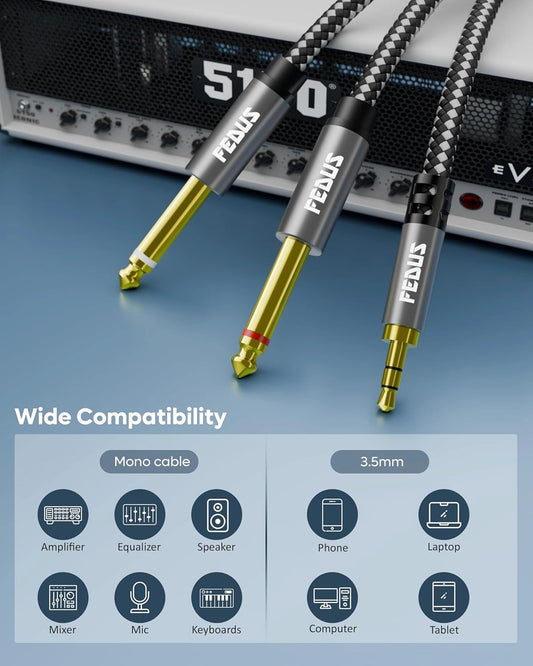Filter
23 results
20
- 10
- 15
- 20
- 25
- 30
- 50
Best selling
- Featured
- Best selling
- Alphabetically, A-Z
- Alphabetically, Z-A
- Price, low to high
- Price, high to low
- Date, old to new
- Date, new to old
Sort
Sort by:
- Featured
- Best selling
- Alphabetically, A-Z
- Alphabetically, Z-A
- Price, low to high
- Price, high to low
- Date, old to new
- Date, new to old
-
FEDUS Cat6 Heavy Duty Outdoor Cable Weatherproof/UV Resistant 1000mbps Ethernet Cable Suitable for Direct Burial Installations Cat6 Ethernet Patch Cable LAN Cable, Internet Network Cord
✔️SUITABLE FOR OUTDOOR AND DIRECT BURIAL INSTALLATIONS: CAT6 outdoor cable is designed to withstand the outdoor elements. It endures the effects of the sun, water, temperature changes and exposure to potential wildlife and other elements. Many lengths available. ✔️THE RJ45 METAL-SHIELDED CONNECTORS WITH GOLD-PLATED...- from ₹. 215.00
- from ₹. 215.00
- Unit price
- / per
-
Cat6 Outdoor Ethernet Cable (Dark Grey, 1000Mbps)
✔️SUITABLE FOR OUTDOOR AND DIRECT BURIAL INSTALLATIONS: CAT6 outdoor cable is designed to withstand the outdoor elements. It endures the effects of the sun, water, temperature changes and exposure to potential wildlife and other elements. Many lengths available. ✔️THE RJ45 METAL-SHIELDED CONNECTORS WITH GOLD-PLATED...- from ₹. 215.00
₹. 599.00- from ₹. 215.00
- Unit price
- / per
-
FEDUS Flat Cat6 Cable Ethernet Cable, Flat RJ45 LAN Cable wire High Speed 250MHz / 1 Gigabit Speed UTP LAN Cable, Network Internet Cable, Patch Computer Cord Gigabit Category 6 Wires for Modem, Router
✔UNIQUE FLAT DESIGN FOR EASIER INSTALLATION: Comparing with round design ethernet cable, Flat cat6 is installed much more easily and not taking up much space, it is more virtually unnoticeable for the most part, helping to avoid tangled cords; Copper wires are wrapped 8.8mm(Width)*3.5mm(thickness)...- from ₹. 339.00
- from ₹. 339.00
- Unit price
- / per
-
FEDUS Cat6 Ethernet Cable, High Speed 550Mhz 10 Gigabit Speed Utp Lan Cable, Network Cable Internet Cable Rj45 Cable Lan Wire, 6 Wires For Laptop, Pc, Television, Router, Modem-White Colour
✔️HIGH-PERFORMANCE INTERNET CABLE IS CAT6 RATED - The Ethernet cord with 24 AWG CCA wire provides universal connectivity for LAN network components such as PCs, computer servers, printers, routers, switch boxes, TV, Gaming Devices, network media players, NAS, VoIP phones, PoE devices, and more....- from ₹. 249.00
₹. 249.00- from ₹. 249.00
- Unit price
- / per
-
FEDUS Cat6 Ethernet Cable, High Speed 550Mhz 10 Gigabit Speed Utp Lan Cable, Network Cable Internet Cable Rj45 Cable Lan Wire, 6 Wires For Laptop, Pc, Television, Router, Modem-Black Colour
✔️HIGH-PERFORMANCE INTERNET CABLE IS CAT6 RATED - The Ethernet cord with 24 AWG CCA wire provides universal connectivity for LAN network components such as PCs, computer servers, printers, routers, switch boxes, TV, Gaming Devices, network media players, NAS, VoIP phones, PoE devices, and more....- from ₹. 249.00
₹. 249.00- from ₹. 249.00
- Unit price
- / per
-
FEDUS Cat6 Ethernet Cable, L-Shape High Speed 550Mhz 10 Gigabit Speed UTP Lan Cable, Category 6 Wires
▶ L-SHAPED RIGHT ANGLE POWER CABLE - Specially designed 90 degree angle connector directs the cable parallel to the equipment, It Can be used in tight spaces, you can move your Electric Appliances as close as possible to the wall meanwhile greatly protect your...- from ₹. 212.00
- from ₹. 212.00
- Unit price
- / per
-
FEDUS Cat6 Ethernet Cable, High Speed 550Mhz 10 Gigabit Speed Utp Lan Cable, Network Cable Internet Cable Rj45 Cable Lan Wire, 6 Wires For Laptop, Pc, Television, Router, Modem-Orange Colour
✔️HIGH-PERFORMANCE INTERNET CABLE IS CAT6 RATED - The Ethernet cord with 24 AWG CCA wire provides universal connectivity for LAN network components such as PCs, computer servers, printers, routers, switch boxes, TV, Gaming Devices, network media players, NAS, VoIP phones, PoE devices, and more....- from ₹. 249.00
₹. 249.00- from ₹. 249.00
- Unit price
- / per
-
FEDUS Cat6 Ethernet Cable, Multicolour Pack of 5, High Speed 550MHZ/10 Gigabit Speed UTP LAN Cable, Network Cable Internet Cable RJ45 Cable LAN Wire, Patch Computer Cord Gigabit Category 6
✔️5 PACK MULTICOLORED CATEGORY 6 CABLE – White, Black, Orange, Blue, Yellow (always will be 5 different colors, but depending on stock, certain colors may be substituted), Each Cat 6 internet cable 6 ft goes through rigorous testing to ensure a secure wired internet...- from ₹. 533.00
- from ₹. 533.00
- Unit price
- / per
-
FEDUS Cat6 Ethernet Cable, High Speed 550Mhz 10 Gigabit Speed Utp Lan Cable, Network Cable Internet Cable Rj45 Cable Lan Wire, 6 Wires For Laptop, Pc, Television, Router, Modem-Blue Colour
✔️HIGH-PERFORMANCE INTERNET CABLE IS CAT6 RATED - The Ethernet cord with 24 AWG CCA wire provides universal connectivity for LAN network components such as PCs, computer servers, printers, routers, switch boxes, TV, Gaming Devices, network media players, NAS, VoIP phones, PoE devices, and more....- from ₹. 249.00
₹. 249.00- from ₹. 249.00
- Unit price
- / per
-
FEDUS Cat6 Ethernet Cable, High Speed 550Mhz 10 Gigabit Speed Utp Lan Cable, Network Cable Internet Cable Rj45 Cable Lan Wire, 6 Wires For Laptop, Pc, Television, Router, Modem-Red Colour
✔️HIGH-PERFORMANCE INTERNET CABLE IS CAT6 RATED - The Ethernet cord with 24 AWG CCA wire provides universal connectivity for LAN network components such as PCs, computer servers, printers, routers, switch boxes, TV, Gaming Devices, network media players, NAS, VoIP phones, PoE devices, and more....- from ₹. 249.00
₹. 249.00- from ₹. 249.00
- Unit price
- / per
-
Fedus Cat6 Ethernet Cable, High Speed 550Mhz 10 Gigabit Speed Utp Lan Cable, Network Cable Internet Cable Rj45 Cable Lan Wire, 6 Wires For Laptop, Pc, Television, Router, Modem-Yellow Colour
✔️HIGH-PERFORMANCE INTERNET CABLE IS CAT6 RATED - The Ethernet cord with 24 AWG CCA wire provides universal connectivity for LAN network components such as PCs, computer servers, printers, routers, switch boxes, TV, Gaming Devices, network media players, NAS, VoIP phones, PoE devices, and more....- from ₹. 249.00
₹. 249.00- from ₹. 249.00
- Unit price
- / per
-
FEDUS Heavy Duty Outdoor Cat6 Cable Weatherproof/UV Resistant 10000mbps Ethernet Cable Suitable for Direct Burial Installations Ethernet Patch LAN Cable,Internet cable Network Cord White
▶SUITABLE FOR OUTDOOR AND DIRECT BURIAL INSTALLATIONS: FEDUS CAT6 outdoor ethernet cable underground cable is ideal for outdoor and direct buried installation. It can withstand temperature changes, sunlight, soil, water, snow, potential wildlife, and other outdoor factors. Buried directly underground or used in conduits....- from ₹. 177.00
₹. 499.00- from ₹. 177.00
- Unit price
- / per
-
FEDUS Cat6 Ethernet Cable, High Speed 550MHZ / 1Gigabit Speed UTP LAN Cable, Network Cable Internet RJ45 Cable LAN Wire, Patch Computer Cord Gigabit Category 6 Wires for Modem, Router Purple
✔HIGH-PERFORMANCE INTERNET CABLE IS CAT6 RATED - The Ethernet cord with 24 AWG CCA wire provides universal connectivity for LAN network components such as PCs, computer servers, printers, routers, switch boxes, TV, Gaming Devices, network media players, NAS, VoIP phones, PoE devices, and more....- from ₹. 208.00
- from ₹. 208.00
- Unit price
- / per
-
FEDUS Ethernet Switch, 8 Port Gigabit Ethernet Splitter, Plug & Play, Desktop Network Switch Hub, Unmanaged, Compact, with LED, Fanless Quiet, for Internet Cable, Laptop, Router, NAS
▶PROFESSIONAL ETHERNET SPLITTER 1 TO 8 GIGABIT NETWORK SWITCH: Expand your network instantly with the 8-port FEDUS Ethernet Splitter 1 to 8! This 1000 Mbps Ethernet splitter connects one input to four devices, features indicator lights, and supports automatic adjustment to network speeds of...- from ₹. 899.00
- from ₹. 899.00
- Unit price
- / per
-
FEDUS Ethernet Switch, 5 Port Gigabit Ethernet Splitter, Plug & Play, Desktop Network Switch Hub, Unmanaged, Compact, with LED, Fanless Quiet, for Internet Cable, Laptop, Router, NAS
▶PROFESSIONAL ETHERNET SPLITTER 1 TO 4 GIGABIT NETWORK SWITCH: Expand your network instantly with the 5-port FEDUS Ethernet Splitter 1 to 4! This 1000 Mbps Ethernet splitter connects one input to four devices, features indicator lights, and supports automatic adjustment to network speeds of...- from ₹. 649.00
- from ₹. 649.00
- Unit price
- / per
-
FEDUS Cat6 Ethernet Cable, Flat RJ45 LAN Cable wire High Speed 250MHZ/1Gbps UTP LAN Cable, Network Internet Cable, Patch Computer Cord Gigabit Category 6 Wires for Modem, Router Gray
✔️ UNIQUE FLAT DESIGN FOR EASIER INSTALLATION - Comparing with round design ethernet cable, Flat cat6 is installed much more easily and not taking up much space, it is more virtually unnoticeable for the most part, helping to avoid tangled cords; Copper wires are...- from ₹. 318.00
- from ₹. 318.00
- Unit price
- / per
-
FEDUS Cat6 Ethernet Cable, Flat RJ45 LAN Cable wire High Speed 250MHZ/1Gbps UTP LAN Cable, Network Internet Cable, Patch Computer Cord Gigabit Category 6 Wires for Modem,Router Yellow
✔️ UNIQUE FLAT DESIGN FOR EASIER INSTALLATION - Comparing with round design ethernet cable, Flat cat6 is installed much more easily and not taking up much space, it is more virtually unnoticeable for the most part, helping to avoid tangled cords; Copper wires are...- from ₹. 318.00
- from ₹. 318.00
- Unit price
- / per
-
FEDUS Cat6 Ethernet Cable, Flat RJ45 LAN Cable wire High Speed 250MHZ/1Gbps UTP LAN Cable, Network Internet Cable, Patch Computer Cord Gigabit Category 6 Wires for Modem, Router Black
✔️ UNIQUE FLAT DESIGN FOR EASIER INSTALLATION - Comparing with round design ethernet cable, Flat cat6 is installed much more easily and not taking up much space, it is more virtually unnoticeable for the most part, helping to avoid tangled cords; Copper wires are...- from ₹. 318.00
- from ₹. 318.00
- Unit price
- / per
-
FEDUS Cat6 Ethernet Cable, Flat RJ45 LAN Cable wire High Speed 250MHZ / 1Gbps UTP LAN Cable, Network Internet Cable, Patch Computer Cord Gigabit Category 6 Wires for Modem, Router, Blue
✔️ UNIQUE FLAT DESIGN FOR EASIER INSTALLATION - Comparing with round design ethernet cable, Flat cat6 is installed much more easily and not taking up much space, it is more virtually unnoticeable for the most part, helping to avoid tangled cords; Copper wires are...- from ₹. 318.00
- from ₹. 318.00
- Unit price
- / per
-
FEDUS Cat6 Ethernet Cable, Flat RJ45 LAN Cable wire High Speed 250MHZ/1Gbps UTP LAN Cable, Network Internet Cable, Patch Computer Cord Gigabit Category 6 Wires for Modem, Router Orange
✔️ UNIQUE FLAT DESIGN FOR EASIER INSTALLATION - Comparing with round design ethernet cable, Flat cat6 is installed much more easily and not taking up much space, it is more virtually unnoticeable for the most part, helping to avoid tangled cords; Copper wires are...- from ₹. 318.00
- from ₹. 318.00
- Unit price
- / per
